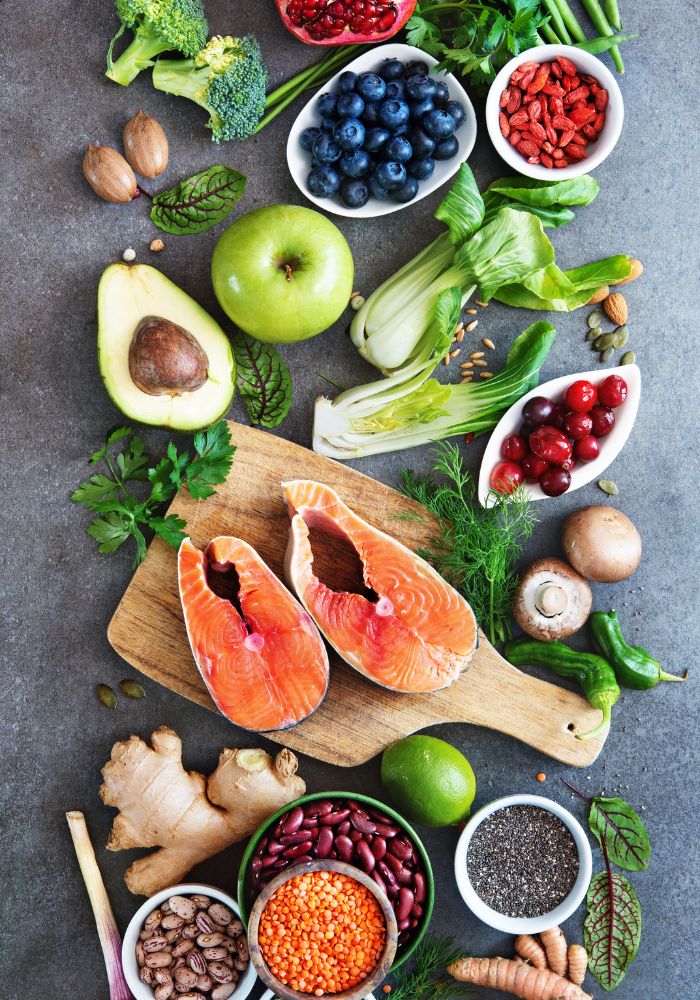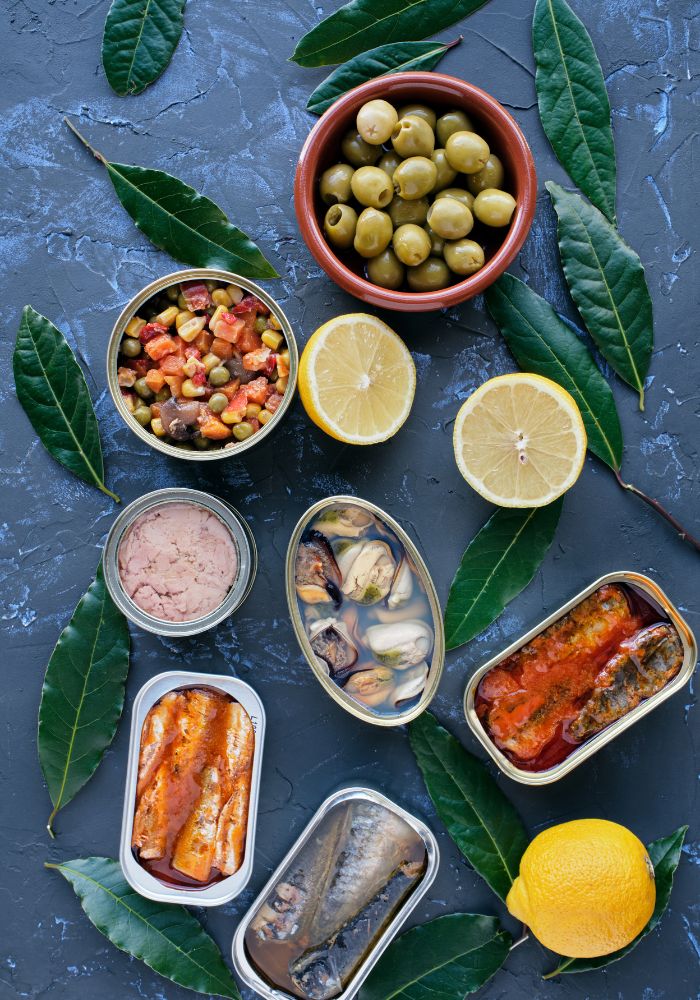Understanding the NOVA Food Classification System


Have you heard of the NOVA Food Classification System? I’m excited to share with you the essentials of this system because it simplifies healthy eating without extreme dieting. It’s a non-restrictive approach for people who value both health and food.
The NOVA food classification system is a way to categorize foods based on the extent and purpose of their processing. This system was developed by a team of nutrition and health experts as a tool to evaluate food processing and its impact on public health. It is a fantastic tool to help us make healthier food choices.
What I appreciate most about this system is its balanced approach, specifically these benefits:
- The Nova Food Classification System doesn’t advocate for eliminating entire food groups, which I believe is crucial for a sustainable and healthy lifestyle. Instead, it emphasizes the quality of the food we eat, guiding us to choose less processed options.
- By focusing on unprocessed or minimally processed foods, we nourish our bodies with essential nutrients while still enjoying the flavors and cultural aspects of our food. This method allows for a diverse and adaptable diet, catering to individual needs and preferences.
- It’s not about restriction, but about making informed choices that lead to a healthier, more balanced way of eating. And in my experience, this approach not only fosters physical wellbeing but also supports a positive relationship with food.
Let’s dive in and understand what it’s all about!
Nova Group 1: Unprocessed or Minimally Processed Foods

The base of the NOVA Food Classification System consists of unprocessed or minimally processed foods. These are the foods that are closest to their natural state.
Think fresh fruits and vegetables, grains, meat, fish, eggs, and milk. These foods have either not been processed at all or have undergone minimal processes like freezing, boiling, or drying, without the addition of other substances.
Nova Group 1: Unprocessed or Minimally Processed Foods Examples
- Fresh fruits and vegetables
- Nuts and seeds (without added salt or sugar)
- Whole grains like brown rice, corn kernels, and wheat berries
- Fresh or dried herbs and spices (e.g., oregano, cinnamon)
- Fresh or pasteurized vegetable or fruit juices (with no added sugar)
- Fresh and dried mushrooms, fungi, or algae
- Grits, flakes, and flours made from corn, wheat, or oats
- Fresh, chilled, or frozen meat, poultry, fish, and seafood
- Dried or fresh pasta, couscous, and polenta made only from water and grains
- Fresh or pasteurized milk and plain yoghurt
- Eggs
- Tea and coffee
- Lentils, chickpeas, beans, and other legumes
- Dried fruits
- Tap, spring, and mineral water
Eating more from this group means you’re consuming foods in their purest form, packed with essential nutrients. These are your everyday go-to’s for a balanced diet.
All of the healthy recipes in my recipe archive fit the bill for this type of eating.
Nova Group 2: Processed Culinary Ingredients

Next up, we have processed (but still natural) culinary ingredients. These are called processed culinary ingredients because Group 2 items are rarely consumed in the absence of group 1 foods.
This group includes oils, fats, salt, and sugar – ingredients extracted from natural foods or nature itself. They’re often used to cook and season our foods, adding flavor and texture.
So long as they come from a natural source, it’s absolutely ok to use these in moderation when preparing food.
“As long as they are used in moderation in culinary preparations based on natural or minimally processed foods, oils, fats, salt, and sugar contribute toward diverse and delicious diets without rendering them nutritionally unbalanced,” according to the ECU Physicians reference guide.
Nova Group 2: Natural Oils, Fats, Salt, and Sugar Examples
- Oils made from seeds, nuts, fruits (soybeans, corn, oil palm, sunflower, olives)
- Butter
- White, brown, other sugars, and molasses (from cane or beet)
- Lard
- Honey (extracted from honeycombs; filtered and/or pasteurized)
- Coconut oil
- Real Maple Syrup (extracted from maple trees)
- Refined or coarse salt (mined or from seawater)
- Starches (extracted from corn and other plants)
- Foods combining any two of these (e.g., salted butter)
Balance is key; these should complement, not dominate, your meals.
Nova Group 3: (Minimally) Processed Foods

Minimally Processed Foods make up our third group. These are generally made by adding salt, sugar, or other Group 2 substances to Group 1 foods. Examples include canned vegetables, cheeses, and bread. They are recognizable versions of their original foods but with added ingredients for preservation or taste.
It’s okay to include these in your diet, but remember, they shouldn’t be the main event. Use them as a part of a meal rather than the meal itself.
Nova Group 3: (Minimally) Processed Foods Examples
- Canned or bottled legumes or vegetables (preserved in salt, vinegar, or pickling)
- Canned fish (sardine, tuna, with or without preservatives); this recipe comes to mind!
- Tomato extract, pastes, or concentrates (with salt and/or sugar)
- Salted, dried, smoked, or cured meat or fish
- Fruits in sugar syrup (with or without added antioxidants)
- Coconut fat
- Beef jerky
- Freshly-made cheeses
- Bacon
- Freshly-made (unpackaged) breads (wheat flour, yeast, water, salt)
- Salted or sugared nuts and seeds
- Fermented alcoholic beverages (beer, alcoholic cider, wine)
Author’s Note: To be honest, I was surprised by some of the things on this Group 3 list! As a health coach, I recommend to stay away from or limit items like fruits in sugar syrup, sugared nuts and other sugary items. However, I realize many parts of the world use these foods, so I’m still a fan of the Nova Food Classification System.
Nova Group 4: Ultra-Processed Foods


Finally, we come to ultra-processed foods – the ones we should be most cautious about.
Here’s where we distinguish between “minimally-processed food” (e.g. bread you make at home with real-food ingredients) and “ultra-processed food” (e.g. bread made in a factory).
Ultra-processed foods are not just processed but transformed through multiple processes with the addition of many substances. They often contain little or no whole foods. Think soft drinks, sugary cereals, and packaged snacks.
The main goal of creating ultra-processed foods is to make items that are easy to eat, drink, or quickly heat up. These foods often take the place of natural, simple foods like fruits, nuts, milk, and water, as well as meals and desserts made fresh. Ultra-processed foods are known for their strong flavors, eye-catching packaging, and heavy advertising, especially towards young people. They often come with health claims, are very profitable for companies, and are usually made by large, international corporations.
Ultra-processed foods are usually high in sugar, fat, and salt, and low in essential nutrients. They are also highly palatable, making it easy to overeat them. It’s best to limit these as much as possible in your diet.
Nova Group 4: Processed Foods Examples
- Fatty, sweet, savory, or salty packaged snacks
- Pre-prepared (packaged) meat, fish, vegetables
- Biscuits (cookies)
- Pre-prepared pizza and pasta dishes
- Ice creams, frozen desserts
- Pre-prepared burgers, hot dogs, sausages
- Chocolates, candies, confectionery
- Pre-prepared poultry and fish ‘nuggets’ and ‘sticks’
- Cola, soda, other carbonated soft drinks
- Animal products from remnants
- ‘Energy’ and sports drinks
- Packaged breads (sliced sandwich breads, hamburger or hot dog buns, etc.)
- Canned, packaged, dehydrated (powdered) soups, noodles, sauces, desserts, drink mixes, seasonings
- Baked products with hydrogenated vegetable fat, sugar, yeast, whey, emulsifiers, additives
- Sweetened and flavored yogurts (including fruit yogurts)
- Breakfast cereals and bars
- Dairy drinks (including chocolate milk)
- Infant formulas & drinks, meal replacement shakes (e.g., ‘slim fast’)
- Sweetened juices
- Pastries, cakes, cake mixes
- Margarines and spreads
- Distilled alcoholic beverages (whisky, gin, rum, vodka, etc.)
The Key Takeaway
Remember, the NOVA system isn’t about strict rules or completely eliminating certain foods. It’s about awareness and balance.
Prioritize fresh, whole foods, use processed ingredients thoughtfully, and limit the ultra-processed ones. By understanding these groups, you can make informed choices that lead to a healthier, more balanced diet.
Reference: “The NOVA Food Classification System” Compiled in 2018 by EduChange with guidance from NUPENS, Sao Paulo




